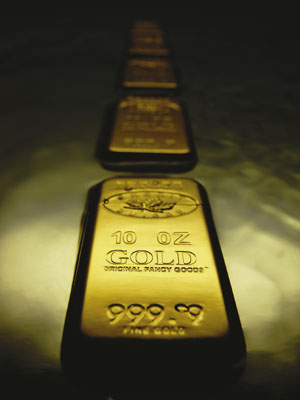
Gold Assayers See Their Business Boom
High gold prices are giving a boost to gold assayers, who put it through a trial by fire to test for purity
The business of gold assaying in India has been growing at 40-50 percent in value terms for the last two to three years. Assaying is a process where a small sample of gold is melted and the average content of the yellow metal is determined. It is on this basis that the gold refiner issues a certificate relating to the purity of gold.
Two things are driving this uptick: The Bureau of Indian Standards wants gold traders to provide hallmarks to the gold they sell. Second, with the price of gold going up dramatically, the risk profile of the commodity has increased. There is a greater chance of people trying to pass off adulterated gold as the real McKoy.
Conventional modes of testing cannot detect impurities. This method involves rubbing gold on a kasauti (touchstone) and comparing the marks it makes against those made by a sample that is accepted as the standard. But such testing is only skin testing; it cannot guarantee if the inner part of the item is actually gold or of the same purity. The other way is to also look at its weight, but even here the margin of error could be as high as 5 percent, which is extremely high when the yellow metal costs Rs. 19,000 per 10 grams.
And that is the reason why many gold dealers go in for ‘sample testing’ using the only reliable method, fire assaying — trial by fire. “The bullion market in Mumbai gets about 50 such samples for fire assaying every day,” says Harmesh Arora, 53, vice president of the Bombay Bullion Association for the past 20 years.
Arora’s company, National Indian Bullion Refinery, is also one of the most respected names in the gold assaying business. And business is good, because there aren’t too many assayers in circulation. According to him, there are not more than 15 such refiners in India.
Five generations of the Arora family have been in this business. You need this sort of “longevity” to thrive in the business, which depends on mutual trust between the refiner and the bullion merchants and jewelers. This is because bullion traders leave behind a small sample for testing — usually less than 10 grams. Since the refiner has been in the business over a few generations, the dealers trust them to have done their due diligence about the entire consignment and that their certification applies to the whole lot.
“It requires us to keep the sample for 24 hours, because we have to melt it completely,” says another refiner.
What about the refiner’s own certificates? Does the trade respect them? “Yes, it does. That is because you know the refiner, and his business depends entirely on the quality of gold he supplies. If he goes wrong, he will not belong to the trade any more,” adds the refiner.
Almost all the gold refiners in India have been in the business for generations. Besides it’s tough for new refiners to set up shop in India because the licensing process normally considers only those who have some exposure to gems and jewelry.
(This story appears in the 22 October, 2010 issue of Forbes India. To visit our Archives, click here.)
-
 chansat123
chansat123When steel mills/auto industries are working in the fraction of percentage and PPM (parts per miilion), how jewellers are allowed to waste 8/22 percent? Customers are robbed like anything and this is apart from poor quality.
on Oct 20, 2010















